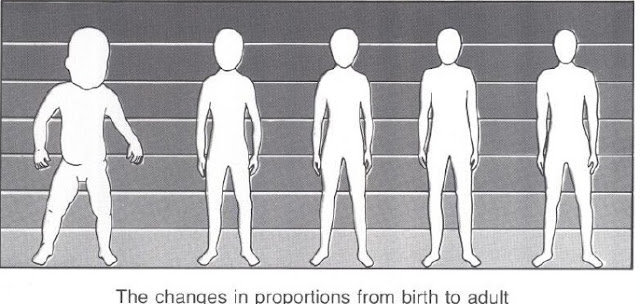HUMAN GROWTH
1. Growth is a process that take place in all living things.
2. The process of growth involves
i. increase in size of organism.
ii. change in appearance of organism.
iii. increase in number of cells.
iv. development of organs function of organism.
The Characteristics of Human Growth.
1. The human growth pattern is a curve.
2. It is divided into five stages of growth:
a. Infancy
b. Childhood
c. Adolescence
d. Adulthood
e. Old age
Comparing the Growth Rates of Boys and Girls
The rate of growth in humans differ according to gender.
Both sexes are of a comparable shape and size during
infancy and childhood.
There are four characteristic stages of growth from birth to adult:
● Rapid growth in infancy and early childhood
● Slow, steady growth in middle childhood
● Rapid growth during puberty
● Gradual slowing down of growth in adolescence until adult height is reached
Patterns of Growth - Changes in Proportions
The physical proportions of the body at birth are very
different from those of the adult.
Some body parts grow more than others during development to reach the final adult proportions.
Changes in the size and shape of the body are caused by different segments growing at different times.
Nutrition
A growing child who does not have
sufficient protein may develop a
dieses called kwashiorkor.
Those suffering from kwashiorkor
would be physically weak and show growth retardation.























![[heart.jpg]](https://blogger.googleusercontent.com/img/b/R29vZ2xl/AVvXsEjEw6BmX7exTOo_ZDHouOHDm5_GlYWyDgNKm3E3eB4y_2f4w9qaCAtPBmLwioC1nYTe1ssh2ZLNr-GJ7vepP9FKBNlnQQXEa_hbUR1a7aNw1hRzaQ2AJgREVbVWjPdYKWLetTQ4MqWc-FY/s400/heart.jpg)





